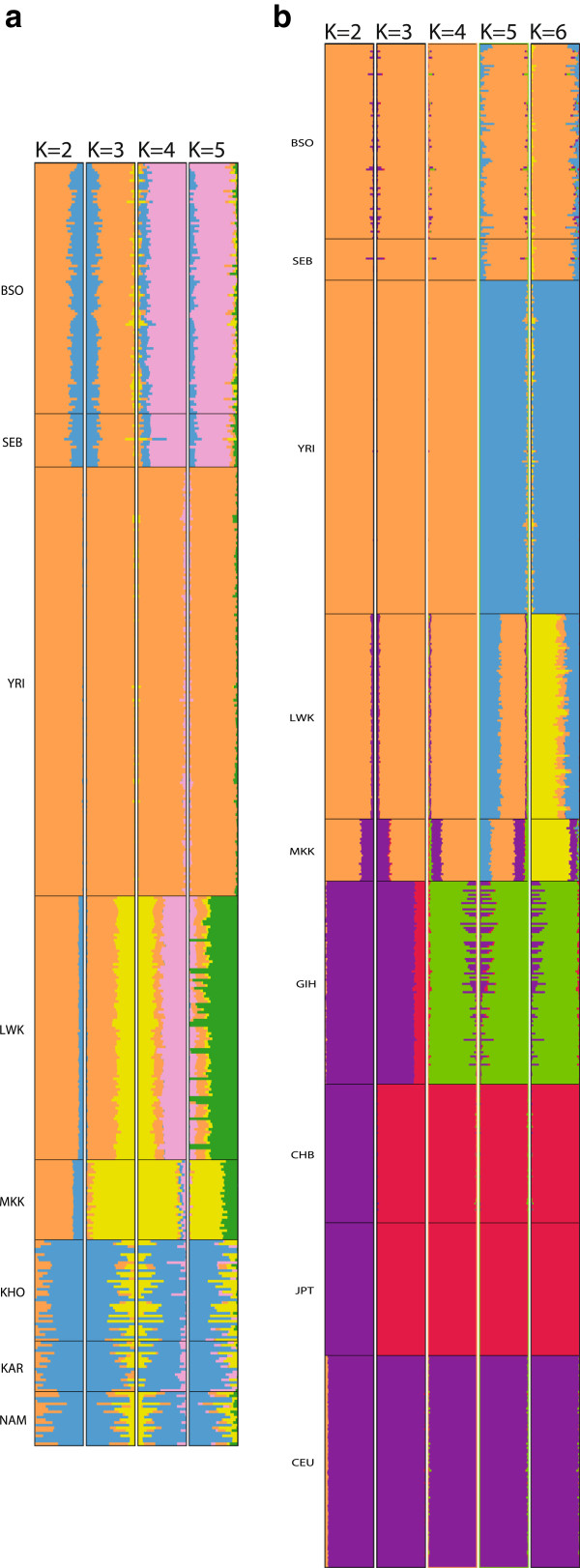Figure 4.
ADMIXTURE plots comparing genetic variation in Sowetans to that seen worldwide. ADMIXTURE was used to compare genetic composition of Sowetans to other populations worldwide, based on 460 568 SNP markers. a) When incorporating African populations only, the Yoruba (YRI) are distinguished from other Africans from K=2. At K=3, southeastern Bantu-speakers (BSO and SEB) are discerned from the Luhya (LWK) and Maasai (MKK), but share a degree of ancestry with Khoe-San groups (KAR, KHO, NAM). Both K=4 and K=5 increasingly depict each African population as a unique entity, in line with the diverse genetic architecture of the continent. b) At an intercontinental level, K=2 separates Africans from non-Africans whilst K=3 groups populations broadly into Asian (CHB, JPT), European (CEU) and African categories. K=4 then differentiates Gujarati Indians (GIH) beyond a simple mix of European and Asian genetic variation. Increasing K values separate out African populations along the lines described in a). At K=6, BSO and SEB appear highly diverse, possessing contributions from all six ancestral clusters.

